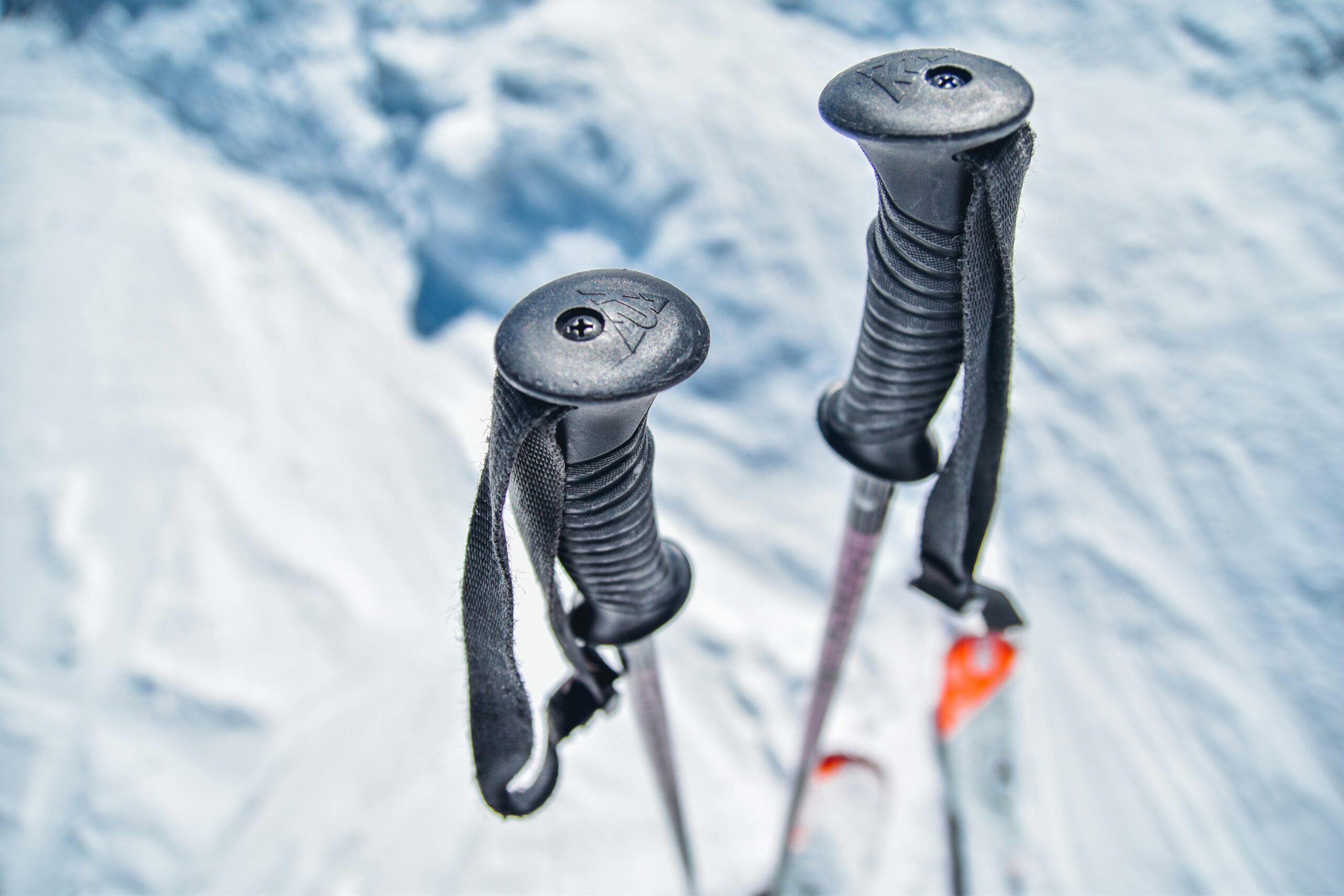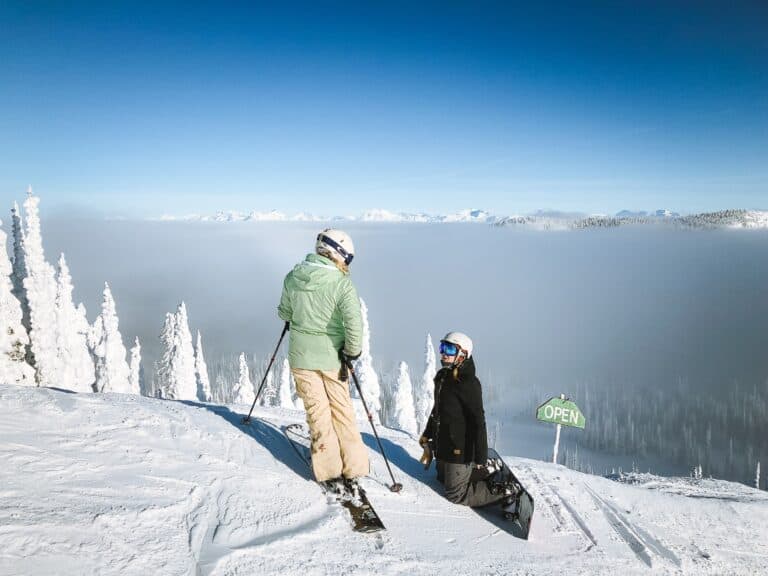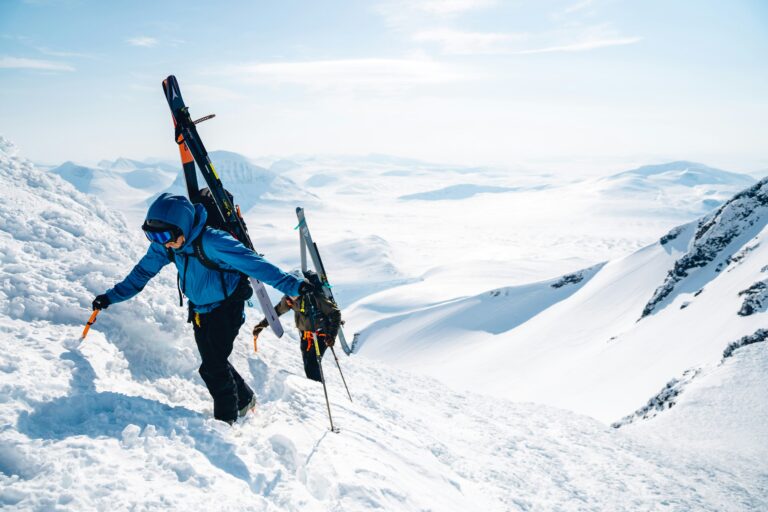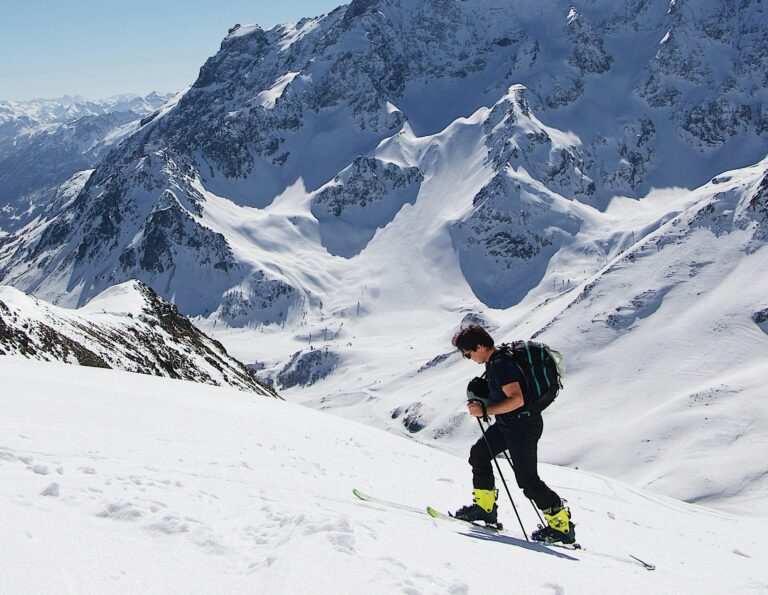Alpine vs Nordic Skiing: Discover the Best Fit for Your Winter Adventure in 2025
When it comes to alpine vs Nordic skiing, which one is the best for you? Read this comprehensive guide to find out more before hitting the slopes.

Last Updated on 3 May 2025
Are you thinking about the rush of alpine skiing with its thrilling descents or the rhythmic endurance of Nordic skiing across snowy landscapes? Do you fancy giving one, or maybe both, a try this winter season?
As a family, we love the joy of heading to the mountains to hit the snow-covered slopes for some much-needed fun. There’s nothing better than discovering a new run or exploring a different resort you’ve never been to when on holiday.
But when it comes to alpine vs Nordic skiing, which one best suits your winter sports aspirations?
Thankfully, we’ve got you covered. Read on to find out the core components that define alpine and Nordic skiing, from their technical demands and gear to the landscapes they cover. Discover each style and find out whether alpine vs Nordic skiing calls you to the snow-laden slopes.
Key Takeaways
Alpine skiing is characterised by high-speed descents on steep, groomed slopes, requiring specialised gear designed for agility, precision, and stability, while providing a thrilling, adrenaline-fueled experience.
Nordic skiing focuses on endurance and finesse, using lightweight, flexible gear suitable for long distances and flat terrains, promoting a serene connection with natural winter landscapes through classic and skate skiing techniques.
Both alpine vs Nordic skiing have significant economic impacts on local communities, boosting tourism and creating jobs, while fostering unique social cultures and sporting communities.
Read more: 11 of the Best Ski Jackets to Hit the Slopes of 2025
Read more: Snowboard Helmet: 9 of the Best For Men, Women & Kids in 2025
Unveiling the Thrill of Alpine Skiing

Alpine skiing, also known as downhill skiing, delivers a heady blend of excitement, freedom, and a dash of controlled chaos.
This high-speed descent on steep slopes gives an adrenaline rush that is highly addictive.
Navigating through moguls, jumps, and sharp descents requires agility, precision, balance, and quick reflexes. The dynamic nature of alpine skiing means that you can reach speeds up to 130 km/h, offering a range of events and difficulty levels for every ski enthusiast.
Some of the events and difficulty levels in alpine skiing include:
Slalom;
Giant Slalom;
Super-G; and
Downhill.
When doing this type of skiing at popular ski resorts, it demands specific gear to optimise control and stability. The boots are rigid and securely attached to wide, stiff skis designed for the dynamic movements typical of disciplines such as slalom, giant slalom, super-G, downhill, and freestyle. This gear is necessary to handle the demands of alpine skiing and ensure a safe and enjoyable experience.
However, alpine skiing extends beyond mere speed and equipment. It’s about:
the exhilaration of being in the mountains;
the thrill of navigating steep terrains;
the satisfaction of mastering your skis; and
an adventure that beckons with the promise of unforgettable journeys down snow-covered slopes.
Embracing the Endurance of Nordic Skiing

Unlike the adrenaline-charged descents in alpine skiing, nordic skiing is an endurance-oriented sport that prioritises strength, skill, and efficient gliding over diverse terrains.
The equipment used in Nordic skiing aids flexibility, with bindings attaching only at the toe, and boots designed for mobility.
Nordic boots are notably lightweight and comfortable, akin to technical winter boots, to accommodate the demands of long-distance skiing on flatter terrain.
Nordic skiing can be split into two different styles: classic and skate skiing. Classic Nordic skiing is performed on groomed trails with parallel grooves. This style relies on the diagonal stride technique and engages the legs, arms, and core muscles. On the other hand, skate skiing offers an alternative with lateral movements akin to ice skating, executed on a wide groomed track.
This sport not only challenges physical fitness, but showcases finesse and agility. Nordic skiing allows you to traverse natural landscapes, navigate varied snow conditions, and immerse yourself in the beauty of winter.
It’s a serene journey through snow-covered landscapes, combining fitness and nature in one exhilarating experience.
The Terrain Tells the Tale: Alpine vs Nordic Skiing
The decision to favour alpine vs Nordic skiing usually hinges on the terrain.
Alpine skiing thrives on steeper slopes within mountainous regions, on smooth and groomed runs designed for high-speed downhill skiing. This style is all about the thrill of descent, the challenge of navigating steeper slopes, and the electrifying sensation of speed.
Nordic skiing takes place on a variety of terrains, from flat landscapes to gently rolling hills. Tracks are meticulously groomed for classic or skate skiing techniques, providing a smooth surface for skiers to glide across. Nordic skiing embraces the endurance aspect, encouraging skiers to glide across flatter landscapes and enjoy the natural snow conditions.
In essence, it’s the terrain that tells the tale. If you’re seeking the adrenaline rush of high-speed descents and sharp turns, alpine skiing on steep, groomed slopes might be your calling.
But if you’re drawn to the endurance challenge of traversing varied terrains and connecting with nature, then the flat, groomed tracks of classic cross-country skiing, also known as Nordic skiing, or even the more adventurous telemark skiing, could be your perfect match.
Read more: The Best Guide: What to Wear Snowboarding in 2025
Read more: Your 2025 Guide: 5 of the Best Snowboard Boots for Kids
Alpine vs Nordic Skiing: Suiting Up for the Slopes

Both in alpine vs Nordic skiing, appropriate gear is vital to ensure performance and safety. The gear varies significantly between the two, influenced by the terrain and fitness requirements.
Mastery of the Mountains: Alpine Equipment
In alpine skiing, the equipment is designed for stability and control during high-speed descents.
Alpine skis are designed to be shorter, wider, and more rigid, which helps improve stability during high speeds and sharp turns on the slopes. This design is tailored to enhance performance for alpine skiing. Modern models have increased in width to handle various snow conditions, enhancing their versatility on the slopes.
Alpine ski bindings typically include an integrated system with a toe and heel piece. This configuration offers:
Ease of turning;
Enhanced edge angle;
Response; and
Vibration damping.
Alpine ski boots, on the other hand, are made of stiff plastic, providing necessary ankle support for controlling the skis, which is crucial in downhill skiing scenarios.
Like any sport, correctly fitting your gear is important. In alpine skiing, ensuring that your boots, bindings, and skis are professionally fitted can prevent injuries and ensure optimal control and safety on the mountain.
Gliding Across the Snow: Nordic Equipment
In contrast to the rigid, control-focused gear of alpine skiing, Nordic skiing equipment is designed to be lightweight and flexible. Classic cross-country skis are stiff, narrow, and lightweight, while skate skis, though still lightweight, serve a different style of Nordic skiing.
Nordic ski boots are designed for classic and skate skiing, with the classic style featuring longer and narrower boots that hinge at the toe for greater flexibility.
Bindings for Nordic skiing include SNS (Salomon Nordic Skiing), NNN (New Nordic Norm), and NNN BC (New Nordic Norm Backcountry) for various conditions, and advanced systems like NIS (Nordic Integrated System) and Turnamic provide tool-free adjustments for skiers on the move.
Nordic skiing also uses Nordic skis with longer ski poles made from lightweight materials. These are crucial for propelling skiers across flat terrains and gentle inclines, helping to maintain a steady rhythm and conserving energy.
Cultures and Communities: Social Aspects of Skiing Styles

Skiing is not just a sport; it’s a lifestyle, and each style fosters unique social aspects.
Alpine skiing is renowned for its après-ski culture, a term coined in the French Alps in the 1950s, characterised by varying social activities across regions that reflect local tastes and traditions.
Whether it’s upscale dining and late-night parties in European locations or more laid-back beer-fueled gatherings in North America, the après-ski experience is as diverse as the skiers themselves.
On the other end of the spectrum, Nordic skiing fosters tight-knit communities through clubs and meetups. This creates a different social dynamic that encourages sharing and camaraderie, allowing skiers to connect on a more personal level.
For those seeking tranquillity after a day on the slopes at a ski resort, alternative après-ski experiences can be enjoyed privately with warm drinks, alpine cuisine, and a cosy home or lodge setting. In this way, skiing offers a range of social experiences that cater to everyone, from the party-goer to the peace-seeker.
Read more: What Are the Different Types of Skiing? The Best Guide for 2025
Read more: What Is Nordic Skiing and Why Should You Try It in 2025?
Answering the Call of the Slopes: Choosing Your Style – Alpine vs Nordic Skiing
The choice between alpine vs Nordic skiing typically depends on individual preferences, strengths, and the kind of experience one seeks.
Do you crave the thrill of high-speed descents, or do you prefer the serenity of gliding across scenic landscapes at a leisurely pace? For those who enjoy alpine skiing, a ski lift can be an essential part of the experience, providing easy access to the slopes.
The physical requirements of the two styles also differ. Alpine skiers should concentrate on intense burst training, while those pursuing Nordic skiing need to focus on stamina and endurance to sustain a steady pace over an extended period. But if you’re seeking a bit of both worlds, alpine touring can provide an adventurous blend suitable for skiers who enjoy both downhills and cross-country skiing.
A good thing to remember is that your choice of skiing style can evolve and adapt over time, catering to a variety of winter experiences. You can progress from the tranquillity of Nordic trails to the dynamic thrills of alpine slopes, allowing you to explore the full spectrum of what skiing has to offer.
Preparing for the Perfect Ski Day

The first step towards preparing for an ideal ski day is choosing a suitable destination.
Alpine enthusiasts might favour resorts with lifts and groomed slopes, while Nordic skiers may opt for locations with extensive flat and snow-covered terrain networks. Once you’ve chosen your destination, it’s time to plan financially. You can save by purchasing lift tickets in advance, and if you’re planning multiple ski days, a season pass may offer unlimited access and substantial savings.
Next, it’s time to prepare your skiing equipment. Whether you’re tuning your skis or snowboard or creating a detailed packing list, planning can help you avoid any last-minute surprises. And let’s not forget the importance of a comfortable wardrobe. As temperatures can fluctuate on and off the slopes, packing layers can ensure you’re prepared for any weather conditions.
Safety First: Precautions for Alpine and Nordic Skiers
Safety takes precedence in any sport, and skiing is no different.
Both alpine and Nordic skiers should wear helmets, understand and adhere to the ski area’s rules, and select appropriate skiing levels to match their abilities. For alpine skiers, choosing suitable bindings calibrated to their personal profile and skiing style is crucial. They should also observe slope behaviour rules to avoid collisions and falls.
Nordic skiers, on the other hand, should ensure they have the proper gear for the terrain and weather conditions, stay hydrated, stick to trails, and be mindful of wildlife encounters. Skiers across both disciplines should gradually adapt to higher altitudes and inform others about their planned route and expected return time. These measures can enhance safety in case of emergencies and ensure a fun and secure ski day.
Economic Impact: Skiing as a Lifestyle and Industry
Skiing, whether alpine vs Nordic skiing, is more than a sport or leisure activity—it’s a significant economic driver.
In Europe, the skiing industry has shown remarkable resilience and growth, particularly during the 2022 and 2023 seasons. Alpine vs Nordic skiing has been instrumental in bolstering local economies, creating jobs, and generating tax revenue.
The 2022 and 2023 seasons saw European ski resorts bounce back from the challenges posed by the pandemic, with areas like the French Alps and Austrian Tyrol reporting substantial increases in visitor numbers. This resurgence has been a boon to local economies, with tourism-related spending in these regions showing a marked increase. The economic impact is profound, with the ski industry in the Alps alone contributing billions of Euros to the regional economies.
Employment in these areas has also seen a positive trend, with thousands of seasonal jobs created each winter to support the influx of tourists. This includes positions directly related to the ski resorts, such as instructors and lift operators, and jobs in the hospitality and retail sectors.
Nordic skiing events, like the Vasaloppet in Sweden, continue to attract significant international participation, which translates into economic benefits for the host regions. The 2022 Vasaloppet, for example, had a noticeable impact on the local economy, with participants and spectators spending on accommodations, food, and other services.
In addition to the direct financial contributions, the skiing industry in Europe also has a multiplier effect on the economy. Each Euro spent by visitors in the ski regions stimulates additional economic activity, contributing to the overall financial health of these areas.
The 2022/23 ski season in Europe has thus underscored the importance of skiing as an economic pillar for mountain regions, highlighting its role in job creation, tourism, and overall economic development.
Final Thoughts
We’ve journeyed through the thrilling descents of alpine skiing and the endurance challenges of Nordic skiing, explored their unique terrains, and delved into the distinctive gear each one requires.
We’ve also immersed ourselves in the vibrant cultures and communities that alpine vs Nordic skiing fosters, learned how to prepare for a perfect ski day, and understood the importance of safety precautions. Finally, we’ve recognized the significant economic impact of skiing as a lifestyle and industry.
Whether you’re drawn to the adrenaline-fueled thrills of alpine skiing or the serene landscapes of Nordic skiing, the choice ultimately comes down to your personal preferences, strengths, and desired experiences. So, answer the call of the slopes and embark on your skiing adventure. After all, skiing isn’t just a sport; it’s a way of life!
What will you pick when it comes to alpine vs Nordic skiing?
Frequently Asked Questions
What is the difference between Nordic and alpine skiing?
The main difference between alpine vs Nordic skiing is the terrain: Nordic skiing takes place on flatter terrain with gradual inclines, whereas alpine skiing occurs on steep downhill slopes with challenging elements like jumps or moguls.
Is there a difference between Nordic and cross-country skiing?
There is no difference between Nordic and cross-country skiing as they are both umbrella terms for the sport, with classic and skate techniques falling under that umbrella. They use slightly different body motions and equipment.
What kind of gear do I need for alpine skiing?
You need short, wide, and rigid skis, stiff boots with ankle support, and bindings for ease of turning and vibration damping to enjoy alpine skiing.
What kind of gear do I need for Nordic skiing?
For Nordic skiing, you will need long, narrow, and lightweight skis, flexible boots that hinge at the toe, and bindings with tool-free adjustments. These items are essential for a successful Nordic skiing experience.
How should I prepare for a ski day?
To prepare for a ski day, choose the right destination, plan financially, check your equipment, and pack suitable clothing for changing weather conditions. These steps will help ensure a smooth and enjoyable experience on the slopes.






